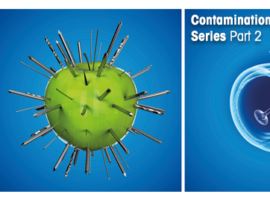-
19 JUN 18
Decoding Digitization & Digitalization
What is digitization?
Simply put, it means converting information, i.e. analog source material, into a digital, numerical format which is readable and understood.
What is digitalization?
Digitalization can be the process of changing analog data to digital form or as Gartner explains it is “the use of digital technologies to change a business model and provide new revenue and value-producing opportunities.”
Digitizing increases the efficiencies of some processes for example, bar codes on food packaging. However, digitalization, e.g. a bar code scanner, increases the efficiencies of our process. As the scanner takes an image of the machine-readable set of lines on the packaged food and converts this data into information needed for the consumer, retailer, brand owners, market analysts and, in the event of product recalls, food safety authorities.
Within a food manufacturing environment, digitalization through networked facilities enable manufacturers to have access to real time data collection to improve production line efficiencies and management control. The benefit of both terminologies is that they enable business needs and technology to come together.
Who is driving digitization and digitalization in the food industry?
As consumers, we are. We desire food shopping outlets and delivery services (physical and online) that are efficient and reliable, without both terms such quick access to our favorite food brands would be impossible.
For food manufacturers, readable data and access to information is needed to plan production, improve operational efficiencies, stock ingredients effectively, trace products and prove due diligence.
Data also provides brand owners with vital insight into consumer buying behavior trends, helps shape new product lines and enables personalization.
How can inspection technologies help?
Advanced production inspection technologies – metal detection, x-ray, checkweighing and vision inspection – all offer intelligent software. The capabilities are plentiful from the automating set up to serialization. In addition, inspection data management software is available to collaboratively monitor and manage data from product inspection devices. Thereby, achieving digitalization.
What are the benefits to food manufacturers?
When looking at networked production lines or facilities, inspection data collection is invaluable as the information ensures that contamination checks and other quality assurance procedures can be streamlined. This also helps improve local and global operations, thereby increasing efficiency, uptime and production costs.
In the event of a product recall or audit, the data is easily retrievable to show due diligence has been carried out.
Furthermore, through utilizing unique serial numbers, traceability and accountability across the supply chain can be improved whilst reducing food fraud and preventing sabotage.
In Summary
Only through increased visibility into operations can food manufacturers improve efficiencies and reduce costs. Digitization may have first occurred in the 1950s onwards and digitalization invented afterwards however the gap between technology and food manufacturing is now rapidly decreasing to benefit all stakeholders. Regardless how technology changes the global supply chain landscape, food safety will always be a top priority.
To find out how data will improve food traceability and how to ensure food safety, please download our .
Missed part 1-3 of the Contaminiation Detection Series? Fear not, you can find them here:
Part 1 – Fighting Food Fraud with Existing Technology
Part 2 – One Step Ahead of Food Safety Trends
Part 3 – The Importance of Zero Contamination
Receive notifications of new blog posts by SUBSCRIBING TO OUR BLOG
Leave a reply →




